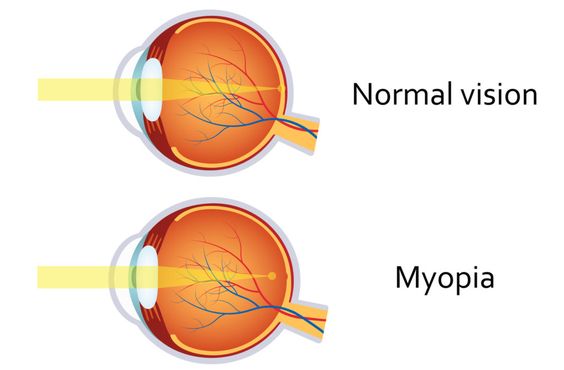Introduction:
Myopia, also known as nearsightedness, is a common vision condition where you can see objects clearly up close, but distant objects appear blurry. This happens when the shape of your eye causes light rays to focus incorrectly, projecting images in front of your retina instead of directly on it.

Myopia typically develops in childhood and adolescence, often worsening until the early twenties. While the exact causes of myopia are not fully understood, it is believed to be influenced by both genetic and environmental factors. Genetics play a role, as children with parents who have myopia are more likely to develop it themselves. Environmental factors, such as prolonged near work like reading or using electronic devices, are also believed to contribute to the development and progression of myopia.
Symptoms of Myopia:
The most common symptom of myopia is blurry vision when looking at distant objects. Other signs include:
- Squinting: To try and focus better on distant objects.
- Headaches: Due to eye strain from squinting or uncorrected vision.
- Difficulty seeing at night: Especially when driving.
If you experience any of these symptoms, it's crucial to consult an eye doctor for a comprehensive eye exam.
Treatment for Myopia:
Fortunately, myopia can be easily corrected with:
- Eyeglasses: Lenses in eyeglasses help refocus light correctly onto the retina.
- Contact Lenses: Similar to eyeglasses, contact lenses offer a corrective option placed directly on the eye.
- Refractive Surgery: Procedures like LASIK can reshape the cornea to correct the refractive error causing myopia, potentially reducing or eliminating the need for corrective lenses.
Early detection and correction of myopia are crucial to prevent vision impairment and ensure clear and comfortable vision.





